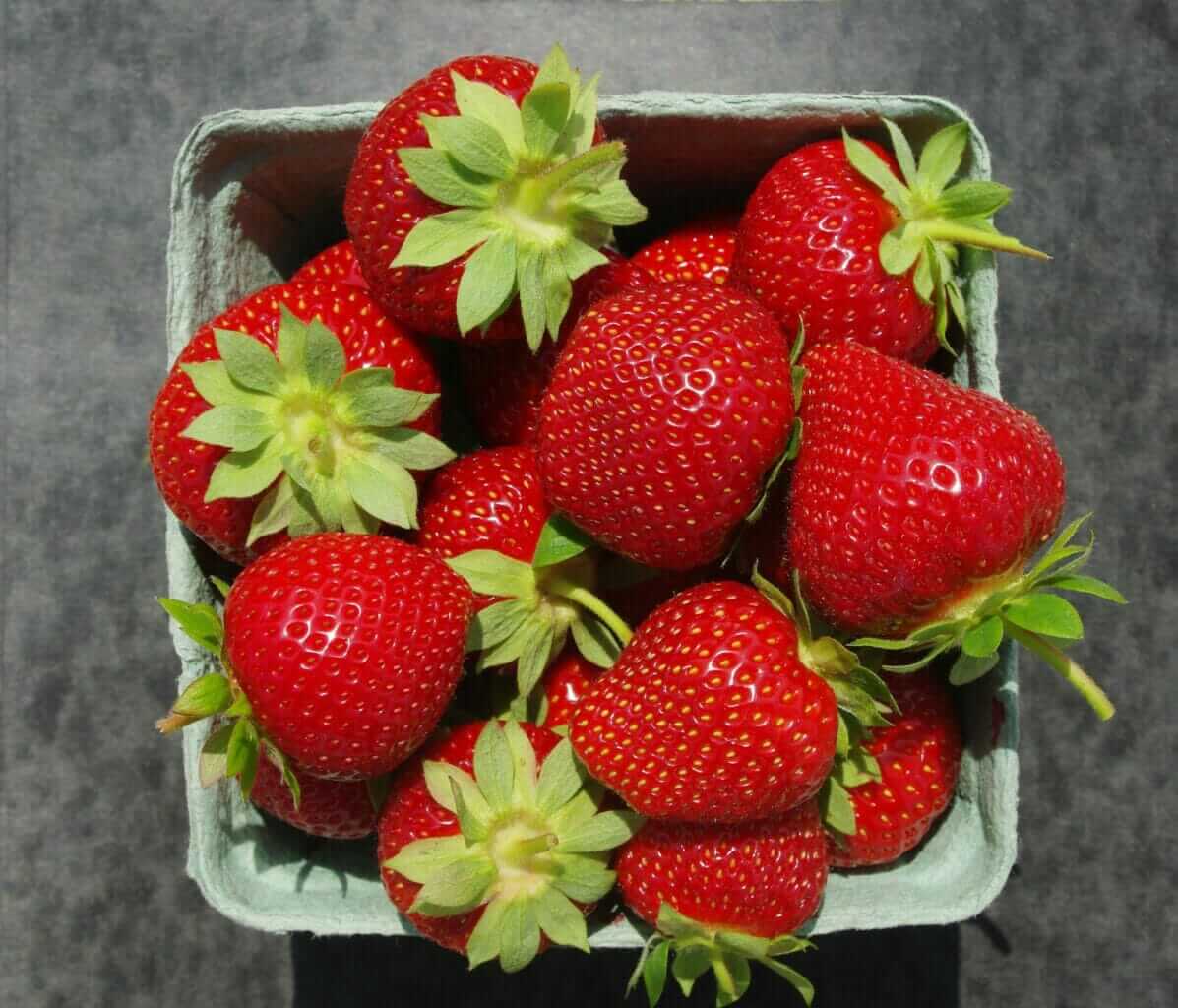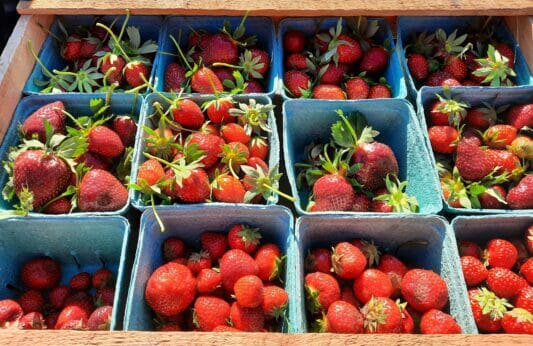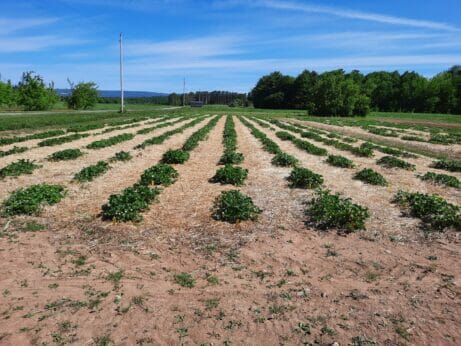As the effects of climate change become more pronounced, growers and researchers across North America are racing to keep field strawberries alive and well. Will their efforts be enough to keep consumers supplied with strawberries in the future?

According to the University of Florida, the perfect temperatures for growing strawberries—the Goldilocks zone—is between 50 and 80 degrees Fahrenheit. In Florida, that makes Hillsborough County prime strawberry-growing land, where the plump berries grow and ripen between November and March. In 2021, the region produced more than 10,000 acres with a production value, according to the United States Department of Agriculture, of $399 million.
But that could change. A report released this spring by the Environmental Defense Fund (EDF) suggested that, by 2050, unless growers move north, there’s a real possibility that there will be no Florida strawberries on grocery store shelves during those crucial winter months. “By mid-century, Hillsborough County will no longer be within that Goldilocks range,” says Dr. Eileen McLellan, a senior scientist at EDF and co-author of the report.
In 2020, there were approximately 75 days with temperatures over 85 degrees Fahrenheit in Hillsborough County. By 2050, the climate models used by the EDF predict that number could soar to more than 150 days. It’s already getting hotter. The 12-month average temperature in the county has increased by 4.9 degrees Fahrenheit from May 1900 to April 2023.

Photography courtesy of Canadian Berry Trial Network.
Outside of Florida, which produces many of the winter strawberries, the majority of the strawberries in the nation come from California. The golden state produces 87 percent of all the strawberries consumed in North America. Are strawberries doomed here as well? Scientists at the University of California (UC), Davis have been researching and developing new varieties of strawberries since the 1930s. “One of the primary concerns for growers in California, at the moment, is the saline content in water and soil,” says Dr. Mitchell Feldman, director-elect of UC Davis Strawberry Breeding Program and Research Group.
Too much salt in the soil will, over time, pull water out of plant roots and cause them to die. Salt is present in all soil and is normally leached away by rain or through irrigation. But, up until the heavy rains of last winter, more than 60 percent of California was in the grips of a drought that scientists say was made more severe because of human-caused climate change. The salt in the soil remained. Drought may be one side effect of climate change, but it’s not the only one with which growers are contending. A warmer atmosphere has an increased ability to hold moisture, which causes heavier and longer periods of rain. This means unpredictability for growers.
“No two seasons are the same anymore,” says Kevin Schooley, executive director of the North American Strawberry Growers Association. “Some growing periods are wet; others hot and dry. But it’s the crusher events, periods of unexpected and heavy rain, and sudden storms that do the real damage.”
The heavy rains in California last winter may have ended a long period of drought, but they also caused strawberry fields to be flooded. This meant fewer strawberries available at the grocery store, along with higher prices. According to the Bureau of Labor Statistics, the cost of strawberries in the United States during the first week of March 2023 was 27 percent higher compared to the same time in 2022.

Photography courtesy of Canadian Berry Trial Network.
A warming planet also encourages the spread of soil pathogens. Fusarium wilt is a fungal infection that attacks plant roots and also restricts water flow through the plant. Once controlled by methyl bromide, a pesticide now banned because of its harm to the atmosphere, fusarium wilt thrives in high temperatures, arid climates and warm soils.
“California is a perfect storm of heat and dry [conditions] for soil pathogens to emerge,” says Dr. Stephen Knapp, director of the UC Davis strawberry breeding program. This past spring, UC Davis released five new strains of strawberries into commercial production resistant to fusarium wilt: UC Eclipse, UC Golden Gate, UC Keystone, UC Monarch and UC Surfline.
Three new varieties of strawberries have also been developed recently by the Canadian Berry Trial Network (CBTN), spearheaded by Dr. Beatrice Amyotte, and have proven more resilient to the effects of climate change than those previously grown in eastern Canada. “Their skin is cohesive, airtight and watertight, which makes them able to withstand heavy precipitation without becoming soft or broken up by the rain,” Amyotte told Canada’s Weather Network.

The Canadian Berry Trial Network team.
It takes time, though, to develop new varieties of berries. It took Amyotte and her team 10 years to produce those three varieties. With the effects of climate change affecting the planet faster than first predicted, will there be enough time to save the strawberry? An international team of scientists led by UC Davis has been able to sequence the genome of the cultivated strawberry. This genetic roadmap makes it easier and faster to target specific traits and develop the strawberry with climate change-resistant qualities, such as a higher saline resistance in the event of drought.
Even in the field, growers are finding creative ways to adapt. “Polyurethane tunnels and cloth covers are regularly used to shade plants from extreme heat and severe weather. It’s amazing, even with the sides of the tunnel pulled up, it stays cool,” says Schooley.
McLellan is realistic that strawberries may not be able to be grown in the fields of Hillsborough County by 2050, but she is also hopeful about the berry’s future.
“Strawberries are a bellwether of what could happen to other small berry fruits and vegetables as climate change marches on,” says McLellan, “and why it’s important to study them now and make important changes before it does become too late.”
The Beatles forever